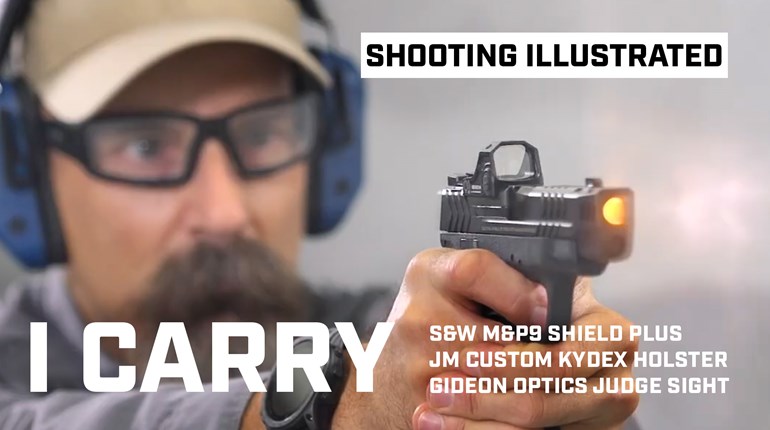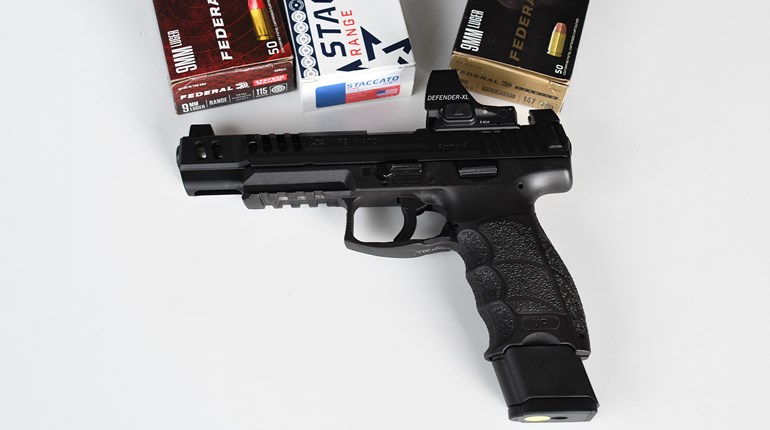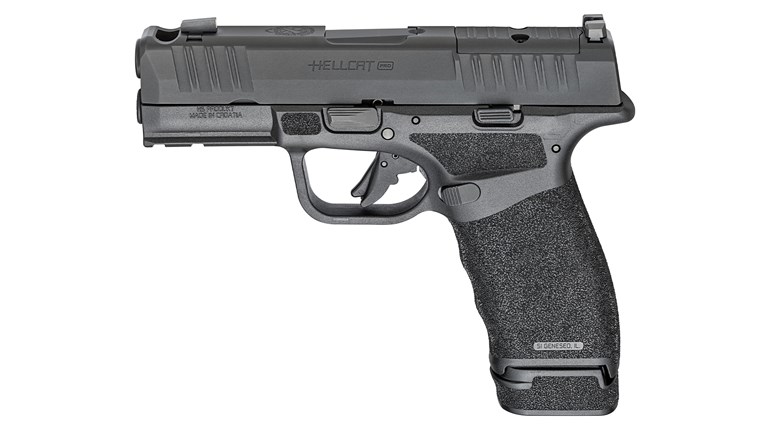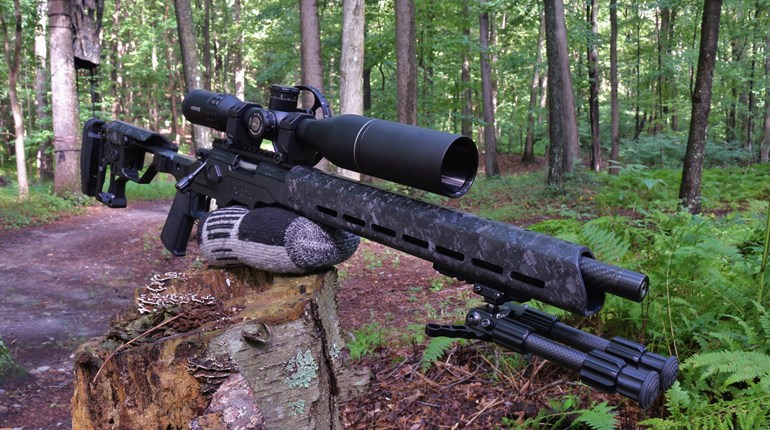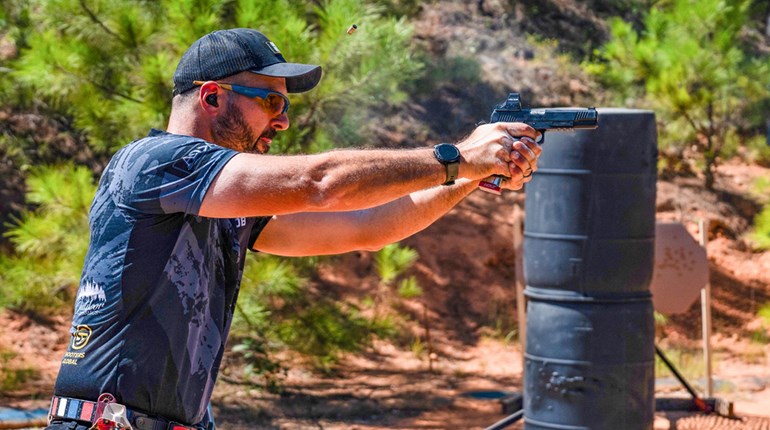
Previous to launching the N1 pistol, Naroh Arms had been a supplier of OEM and aftermarket parts for firearms and was therefore no stranger to precision machining. Judging there was room in the pocket-nine market for a well-built pistol at a reasonable price, it decided to jump right in with both feet.
Nearly everyone to whom I showed the pistol blurted “Oh, it’s like a SIG P365,” which, aesthetically speaking, I guess you could say it is. The grip angle, texturing on the polymer grip frame and neatly chiseled slide contours are indeed somewhat reminiscent of the newest subcompact from Exeter, NH.
Under the hood, however, things are as different as different could be between the two pistols. Both are 9 mm pistols that operate via the Browning tilting-barrel, short-recoil method, but the similarity ends there. The P365 is a striker-fired pistol with a heavily staggered 10-round magazine. The N1, on the other hand, is a seven-shot, hammer-fired pistol that uses a quasi- double-action trigger that would be familiar to owners of Kel-Tecs or Rugers.

While the P365 uses a stamped, sheet-metal chassis to hold the lockwork—a sort of miniaturized version of the system used by the larger P320—the Naroh uses a much more-substantial metal frame. Made of 7075 aluminum and hard-anodized, this frame runs most of the length of the gun and features beefy-looking frame rails.
Naroh claims its glass-reinforced polymer grip is gunsmith replaceable, so that’s another difference between it and the P365.
The polymer frame features a standard Picatinny-style accessory rail with two mounting slots. Given the stubby 3-inch barrel, that’s going to limit the number of accessories that will mount without hanging overly far off the front of the gun, but considering that the P365 has a proprietary rail and competitors like the Smith & Wesson Shield and Glock G43 lack one at all, that’s still a leg up in this market niche.

The grip’s molded-in texturing is evocative of the texturing currently used on SIG Sauers (at least cosmetically; more on that later), and features textured panels on the front, back and sides. There are also textured areas on the sides of the frame above the trigger guard on either side to act as index references for the shooter’s trigger finger.
The stubby grip will only accommodate two adult-size fingers on the frontstrap, but one of the two seven-round magazines that ship with the gun has a floorplate with an extended pinkie-rest.
The slide is machined from stainless steel and available in a natural, stainless color or a nitrocarburized blackened finish like our test sample. It’s topped by a set of plastic three-dot sights, but these can be replaced with any set of aftermarket sights that will fit a Glock G43. This is a pretty clever move on the part of Naroh, ensuring a wide availability of choices.

In addition to forward cocking serrations and the handsomely beveled edges, the slide features machined-out areas on the sides and top reminiscent of the “lightening cuts” one sees on blinged-out Glocks. There’s one of these recessed areas on the side of the chamber as well and, when taken with the red-anodized and skeletonized trigger, the whole gun has a very Instagram-friendly aesthetic.
Said aluminum trigger has a pull that filled me with mixed feelings. Looked at as a double-action trigger, the pull was a consistent 6.25 pounds on my RCBS trigger-pull scale. It was smooth and uniform across its entire travel with no stacking or grit. The break at the end was mushy and vague, however, and did not reward slow trigger pulls.
It’s here that we get back to that grip texturing. Cosmetically, it resembles the texturing on new SIGs, yes, but there’s not only not enough of it on the grip, what there is could stand to be a good bit more aggressive.
Weighing in at barely half an ounce over a pound empty, and slightly more than 20 ounces with seven plus one rounds aboard, recoil was snappy, although the double-nested non-captive recoil springs and well-designed grip contours kept it from being too obnoxious.
There was only one malfunction (a failure to feed) from the third shot I fired from the gun, and then the gun ran seamlessly for the next 400-odd rounds. Hollowpoint ammunition from Federal, SIG Sauer and Sellier & Bellot all fed and functioned, as did FMJ from a variety of manufacturers.
Everything about the gun, from the small parts to the plastic clamshell box it comes in, is produced here in the USA. The price is reasonable, with a $399 MSRP.
It’s up to the market now to decide whether good looks and quality U.S.-made construction at an affordable price mean there’s room for a new player in this field.













